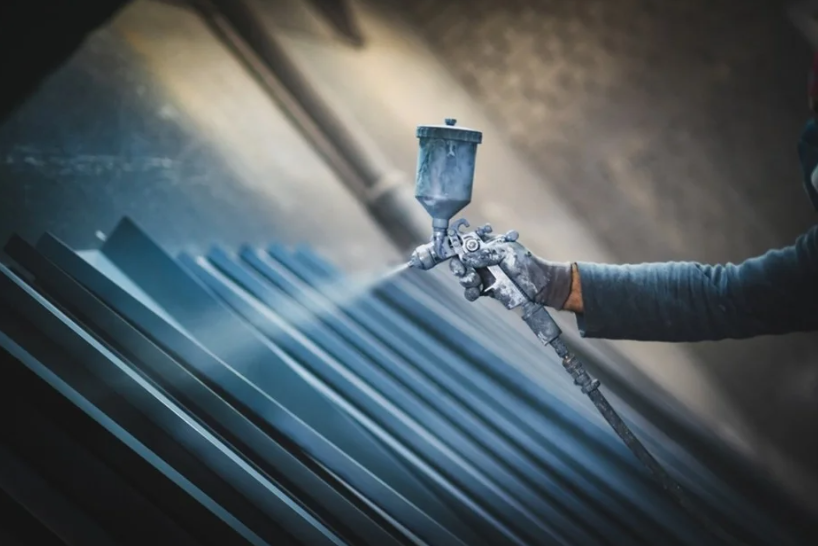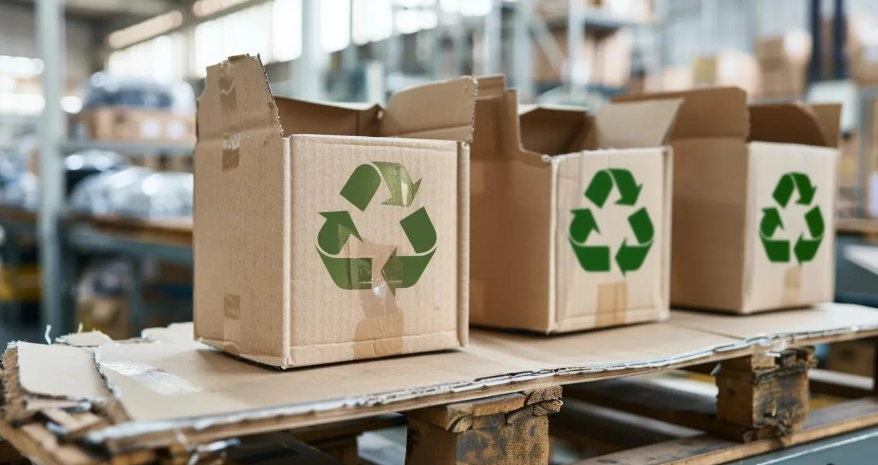Phosphoric Acid in Electroplating and Metal Finishing: Surface Perfection through Chemistry
In the world of electroplating and metal finishing, chemistry is the invisible craftsman behind every smooth, durable and gleaming surface. These industries rely on precise chemical reactions to enhance metal performance, improving corrosion resistance, adhesion and visual appeal. Among the key ingredients driving these transformations stands phosphoric acid, a versatile compound that plays a vital role in surface preparation and treatment. From automotive parts to electronics, this single acid helps shape the durability and brilliance of metals worldwide, proving that true perfection often begins at the molecular level.
Understanding Phosphoric Acid and Its Chemical Properties
Phosphoric acid (H₃PO₄) is a moderately strong, triprotic acid composed of three hydrogen atoms, one phosphorus atom, and four oxygen atoms. This structure allows it to release up to three protons, making it highly adaptable for different chemical reactions depending on concentration and application. It appears as a clear, viscous liquid that is non-volatile and less corrosive than many other mineral acids - properties that make it safer and easier to handle in industrial environments.
In metal treatment and electroplating, phosphoric acid plays several crucial roles. It cleans and degreases metal surfaces, removes oxides and rust, and prepares substrates for coating or plating. The acid reacts with metal oxides to form a thin, insoluble phosphate layer that improves adhesion and corrosion resistance - an essential step for achieving a smooth, uniform finish.
Compared with stronger acids like sulfuric acid (H₂SO₄) or nitric acid (HNO₃), phosphoric acid offers a more controlled reaction. Sulfuric acid is often used for aggressive cleaning or anodizing, but can damage delicate metal surfaces if not carefully managed. Nitric acid, while effective as an oxidizing agent, is more hazardous and produces toxic fumes. Phosphoric acid, in contrast, provides balance - strong enough to clean and condition metals, yet gentle enough to maintain their structural integrity.
This combination of versatility, safety, and precision makes phosphoric acid a cornerstone in
modern electroplating and metal finishing processes across industries.
The Role of Phosphoric Acid in Electroplating
In electroplating, the quality of the final metal coating depends largely on the condition of the surface beneath it. Even minor impurities or uneven textures can cause defects, poor adhesion, or premature corrosion. Phosphoric acid plays a critical role in ensuring that metal surfaces are clean, active, and ready to bond with a new metallic layer. Its effectiveness lies in its ability to act as a cleaner, activator, and stabilizer—all in one.
Surface Preparation and Cleaning
Before electroplating begins, metal surfaces must be free from oxides, rust, grease, and other contaminants. Phosphoric acid is widely used in pre-treatment stages for its ability to dissolve metal oxides and lift surface impurities without over-etching the substrate. During this process, the acid chemically reacts with oxides, converting them into water-soluble compounds that can be easily rinsed away.
What sets phosphoric acid apart is its ability to form a uniform phosphate film on the treated surface. This thin, adherent layer enhances the bonding strength between the base metal and the subsequent plating layer, ensuring a smooth, consistent deposit. The result is improved corrosion resistance and enhanced aesthetic quality in the final product.
Activation and Etching of Metal Surfaces
After cleaning, the surface must be “activated” to create microscopic roughness that promotes stronger adhesion. Phosphoric acid provides gentle micro-etching—removing a very thin layer of metal to expose a fresh, chemically active surface. The process must strike a delicate balance: sufficient etching to increase surface energy, but not so deep as to compromise smoothness or dimensional accuracy. Phosphoric acid’s moderate strength allows for this controlled action, making it ideal for precision electroplating applications such as electronics and automotive components.
pH Control in Electrolyte Baths
In addition to surface treatment, phosphoric acid helps maintain optimal pH levels in electrolyte baths used during electroplating. Stable pH conditions are crucial for achieving uniform metal deposition and preventing unwanted side reactions. If the pH drifts too far in either direction, plating efficiency and coating quality can deteriorate. By acting as a pH buffer, phosphoric acid ensures consistent current efficiency, smoother metal deposits, and an overall higher-quality finish, making it an indispensable agent in the electroplating process.
Phosphoric Acid in Metal Finishing Applications
Beyond electroplating, phosphoric acid is an essential component in metal finishing processes that determine the durability, appearance, and performance of countless metal products. Its chemical versatility allows it to transform raw metallic surfaces into corrosion-resistant, aesthetically appealing, and coating-ready substrates.
Conversion Coatings and Passivation
One of the most important uses of phosphoric acid in metal finishing is the formation of conversion coatings - thin, crystalline phosphate layers that enhance corrosion resistance and surface stability. When phosphoric acid reacts with metals such as steel, zinc, or aluminum, it produces insoluble metal phosphates that act as protective barriers against moisture and oxidation.
This principle underlies common industrial processes like zinc phosphating and iron phosphating, widely applied to automotive bodies, household appliances, and machinery components. Zinc phosphate coatings, for example, provide an excellent base for painting, while iron phosphate treatments are valued for their cost-effectiveness and suitability for lighter-duty applications. In both cases, phosphoric acid is the key agent enabling the formation of these durable, adherent films.
Enhancing Paint and Coating Adhesion
Proper surface pre-treatment is critical for achieving strong paint or coating adhesion. Phosphoric acid removes contaminants and micro-roughens the metal surface, creating anchor points for primers and paints. This not only improves coating adherence but also prevents peeling, blistering, and premature corrosion. As a result, components pre-treated with phosphoric acid exhibit longer-lasting finishes, even under harsh environmental conditions.
Surface Brightening and Smoothness
Phosphoric acid is also used in polishing and brightening baths to achieve smooth, reflective metal surfaces. Through controlled chemical polishing, the acid selectively dissolves microscopic peaks on the metal, reducing surface roughness and producing a uniform, mirror-like finish. This capability makes it indispensable in industries demanding visual perfection, such as decorative hardware, consumer electronics, and stainless steel fabrication.
Industrial Advantages of Using Phosphoric Acid
Phosphoric acid continues to be a preferred choice in metal treatment industries due to its unique balance of chemical strength, safety and versatility. From surface conditioning to corrosion prevention, it provides a range of practical advantages that directly translate into improved product performance, lower maintenance costs, and more efficient production.
Corrosion Protection and Durability Improvements
One of the foremost benefits of phosphoric acid lies in its ability to protect metals against corrosion. When applied to steel, aluminum, zinc, or copper surfaces, it reacts to form an insoluble phosphate film that acts as a chemical barrier against moisture and oxygen. This passive layer significantly enhances the metal’s durability and lifespan, reducing the need for frequent re-coating or replacement. In sectors such as automotive manufacturing, construction, and machinery production, this translates to better reliability and long-term performance in harsh conditions.

Cost-Effectiveness and Ease of Application
Compared to more aggressive or specialised treatment chemicals, phosphoric acid offers an excellent balance between performance and economy. It is readily available, easy to handle, and compatible with standard industrial equipment, making it a cost-efficient option for large-scale operations. Because it is less corrosive than acids like hydrochloric or nitric acid, it also reduces equipment wear and minimises safety risks during handling, further lowering maintenance and operational expenses.
Compatibility with Various Metals
Phosphoric acid demonstrates exceptional adaptability across different metals, including steel, aluminium, zinc, and copper. It effectively prepares and protects each of these materials without causing excessive etching or degradation. This versatility allows manufacturers to use the same treatment chemistry for multiple substrates, streamlining processes and ensuring consistent surface quality.
In essence, phosphoric acid’s combination of protection, economy, and flexibility makes it a cornerstone of modern industrial
metal finishing and electroplating systems worldwide.
Environmental and Safety Considerations
While phosphoric acid is a versatile and effective chemical for metal finishing, its use requires careful attention to safety and environmental responsibility. Proper handling, storage, and disposal are essential to protect workers, equipment, and ecosystems. Industrial facilities typically follow strict guidelines, including the use of personal protective equipment (PPE) such as gloves, goggles, and acid-resistant clothing, as well as proper ventilation and spill containment measures.
Safe disposal and treatment of phosphoric acid-containing wastewater are equally critical. Waste streams from electroplating and metal finishing can contain dissolved metals, residual acids, and other contaminants. To minimise environmental impact, plants often neutralise the acid with alkaline solutions before discharging and implement filtration or precipitation methods to remove heavy metals. These practices help ensure compliance with environmental regulations while reducing the risk of soil and water contamination.
The chemical industry is also exploring eco-friendly alternatives and green chemistry innovations to further reduce its environmental footprint. For example, low-phosphate or phosphate-free pre-treatment solutions are being developed, alongside recycling and recovery systems that allow phosphoric acid to be reused in multiple cycles. Such approaches not only decrease chemical consumption but also minimise hazardous waste generation.
By following rigorous safety protocols and adopting sustainable practices, companies can harness the benefits of phosphoric acid in metal finishing while protecting both people and the planet - a critical balance in today’s environmentally conscious industrial landscape.
Case Studies: Phosphoric Acid in Action
Phosphoric acid plays a pivotal role across multiple industries, demonstrating its versatility and effectiveness in real-world applications.
Automotive Industry - Metal Body Phosphating
In automotive manufacturing, phosphoric acid is widely used for zinc and iron
phosphating of car bodies and components. This treatment provides a uniform, corrosion-resistant base layer that enhances paint adhesion and prolongs the lifespan of vehicles. The result is a smoother finish, reduced peeling or chipping, and improved resistance to environmental stressors such as humidity and road salts.
Aerospace - Precision Surface Treatment
Aerospace components demand exceptional durability and precision. Phosphoric acid is employed to clean, etch, and passivate critical metal parts, including aluminium alloys and high-strength steels. Its controlled etching creates micro-roughness for superior coating adhesion while maintaining exact dimensional tolerances - a key factor in ensuring the performance and safety of aircraft parts.
Electronics - Microcomponent Plating Applications
In electronics, phosphoric acid is essential for microcomponent plating and surface preparation. It removes oxides and primes tiny surfaces for electroplating, ensuring uniform deposition of metals like copper, nickel, or gold. This precision treatment enables reliable conductivity and long-term functionality in devices ranging from circuit boards to high-performance connectors.
These examples highlight how phosphoric acid underpins quality, durability, and precision across industries, proving that a single chemical can deliver remarkable results in diverse metal finishing applications.
Future Trends in Electroplating Chemistry
The field of electroplating and metal finishing is evolving rapidly, with phosphoric acid remaining a central player in innovations. One emerging trend is the development of advanced acid formulations that offer improved efficiency, reduced environmental impact, and enhanced surface performance. These formulations aim to optimise phosphate layer formation, minimise chemical consumption, and maintain consistent results across a variety of metals.
Automation and artificial intelligence (AI) are also transforming electroplating processes. Sensors and real-time monitoring systems can track pH levels, temperature, and metal deposition rates, allowing for precise control of phosphoric acid concentrations and bath conditions. This integration reduces human error, improves consistency, and maximises the quality and durability of metal coatings.
Sustainability is becoming an increasingly important focus in the industry. Circular economy practices, such as recycling phosphoric acid, recovering metals from spent baths, and reducing hazardous waste, are also gaining traction. Manufacturers are exploring greener chemistries and closed-loop systems to lower environmental footprints while maintaining high standards of surface treatment.
Together, these trends indicate a future where electroplating integrates chemical expertise, smart technology, and sustainable practices, ensuring that phosphoric acid remains a vital component in delivering durable, high-quality, and environmentally responsible metal finishes.
FAQs on Phosphoric Acid in Metal Finishing
Is phosphoric acid safe for all types of metals?
Phosphoric acid is compatible with a wide range of metals, including steel, aluminium, zinc, and copper. However, its concentration and exposure time must be carefully controlled to prevent over-etching or surface damage.
How does phosphoric acid differ from hydrochloric acid in electroplating?
Unlike hydrochloric acid, which is highly aggressive and can over-etch metal surfaces, phosphoric acid provides controlled cleaning and micro-etching, forming protective phosphate layers that improve adhesion and corrosion resistance.
What concentration of phosphoric acid is ideal for metal pretreatment?
Optimal concentrations vary by metal type and application, but generally range between 5% and 20% in pretreatment baths, balancing cleaning, etching, and phosphate layer formation.
Can phosphoric acid be recycled in plating systems?
Yes. With proper filtration and pH adjustment, phosphoric acid can often be reused multiple times, reducing chemical consumption and waste.
How does it affect coating thickness and uniformity?
By improving surface adhesion and preparing a consistent substrate, phosphoric acid ensures more uniform plating and better control over coating thickness, enhancing both performance and aesthetics.
Conclusion
Phosphoric acid is a cornerstone of modern electroplating and metal finishing, enabling cleaner, more durable, and visually flawless metal surfaces. Its unique chemical properties allow precise control over cleaning, etching, and coating adhesion, while offering compatibility across a wide range of metals. Equally important is the careful balance of safety, environmental responsibility, and efficiency in its application. As industries continue to innovate with automation, green chemistry, and circular processes, phosphoric acid remains indispensable for achieving high-quality, sustainable results. Adopt smarter chemistry for superior metal finishing results.
















